Posted on September 26th, 2019 by Mary Lord
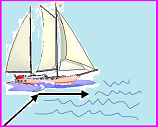 Middle school students learn the concept of dead reckoning by using vectors to plot a course based on a time and speed, then correct their positions with vectors representing winds and currents. Includes a link to related activities on navigation and creating nautical charts.
Middle school students learn the concept of dead reckoning by using vectors to plot a course based on a time and speed, then correct their positions with vectors representing winds and currents. Includes a link to related activities on navigation and creating nautical charts.
Read More
Filed under: Class Activities, Grades 6-8, Lesson Plans | Comments Off on Vector Voyage!
Tags: Aerospace Engineering, Class Activities, Geography, GPS, Grades 6-8, Lesson Plan, Mathematics, nautical charts, naval engineering, navigation, Physics, teachengineering, vectors
Posted on September 23rd, 2019 by ASEE
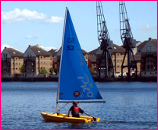 In this lesson, students in grades 2 – 7 use simple materials to design and make model sailboats that must stay upright and sail straight in a testing tank. They will learn the basic components of a ship and how design represents a tradeoff between speed, stability, and ease of handling.
In this lesson, students in grades 2 – 7 use simple materials to design and make model sailboats that must stay upright and sail straight in a testing tank. They will learn the basic components of a ship and how design represents a tradeoff between speed, stability, and ease of handling.
Read More
Filed under: Class Activities, Grades 6-8, Grades 6-8, Grades K-5, Grades K-5, Lesson Plans | 1 Comment »
Tags: buoyancy, Class Activities, Lesson Plan, Ocean, sailboat, wind power
Posted on September 4th, 2019 by Mary Lord
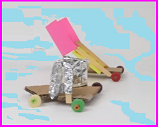 Elementary students learn about wind and kinetic and renewable energy while following the steps of the engineering design process to imagine, create, test, evaluate, and refine small, wind-powered sail cars built from limited quantities of drinking straws, masking tape, paper, and beads. Teams of two then compete to see which sail-car travels the farthest when pushed by the wind (simulated by the use of an electric fan).
Elementary students learn about wind and kinetic and renewable energy while following the steps of the engineering design process to imagine, create, test, evaluate, and refine small, wind-powered sail cars built from limited quantities of drinking straws, masking tape, paper, and beads. Teams of two then compete to see which sail-car travels the farthest when pushed by the wind (simulated by the use of an electric fan).
Note: This NGSS-aligned activity is part of a unit in which multiple activities are brought together for an all-day school/multi-school concluding “engineering field day” competition.
Read More
Filed under: Class Activities, Grades K-5, Lesson Plans | Comments Off on Wind-Powered Sail Cars
Tags: Class Activities, Competitions for Students, Engineering Design Process, Grades K-5, Lesson Plan, sail cars, teachengineering, wind power
Posted on August 31st, 2019 by Mary Lord
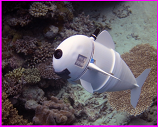 Middle school students take on the role of marine biologists to investigate how sharks move in three-dimensional space (3-D). Understanding the mathematics behind shark movement will inform the design of a prototype joystick for a robotic exploration shark used to collect oceanic data.
Middle school students take on the role of marine biologists to investigate how sharks move in three-dimensional space (3-D). Understanding the mathematics behind shark movement will inform the design of a prototype joystick for a robotic exploration shark used to collect oceanic data.
Read More
Filed under: Class Activities, Grades 6-8, Lesson Plans | Comments Off on Move Like a Shark
Tags: 3-D motion, Aeronautics, Cartesian coordinates, Class Activities, drag, forces, Grades 6-8, Lesson Plan, programming, shark movement, speed, x, y, z axes
Posted on May 20th, 2019 by Mary Lord
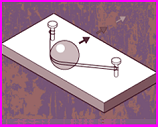 Students in grades 4 to 9 learn about projectile motion by designing, building, and testing a machine that can kick a Ping-Pong ball into a cup lying on its side 12 inches away.
Students in grades 4 to 9 learn about projectile motion by designing, building, and testing a machine that can kick a Ping-Pong ball into a cup lying on its side 12 inches away.
Read More
Filed under: Class Activities, Grades 6-8, Grades 9-12, Grades K-5, Lesson Plans | Comments Off on Build a Kicking Machine
Tags: ball, Class Activities, Engineering Design, forces and motion, Grades 6-8, Grades K-5, Kicking Machine, kinetic energy, Lesson Plan, PBS Design Squad, Physics, projectile motion, simple machines, soccer
Posted on May 9th, 2019 by Mary Lord
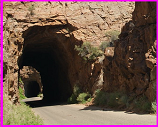 Students in grades 6 to 8 apply their knowledge about mountains and rocks to transportation engineering to develop a model mountain tunnel from that simulates the principles behind real-life engineering design. Teams design and create model tunnels through a clay mountain, working within design constraints and testing for success; the tunnels must meet specific design requirements and withstand a certain load.
Students in grades 6 to 8 apply their knowledge about mountains and rocks to transportation engineering to develop a model mountain tunnel from that simulates the principles behind real-life engineering design. Teams design and create model tunnels through a clay mountain, working within design constraints and testing for success; the tunnels must meet specific design requirements and withstand a certain load.
Read More
Filed under: Class Activities, Grades 6-8, Lesson Plans | Comments Off on Tunnel Through!
Tags: civil and environmental engineering, Class Activities, Grades 6-8, Lesson Plan, railroad, Transportation, tunnel
Posted on May 9th, 2019 by Mary Lord
 The driving of the last spike of the Transcontinental Railroad on May 10, 1863, capped more than a century of engineering triumph and human tragedy. Teach your students about the historical impact of engineering and technology on society with these activities and resources designed to mark the anniversary of that fateful meeting of two steam locomotives at Promontory, Utah, 150 years ago.
The driving of the last spike of the Transcontinental Railroad on May 10, 1863, capped more than a century of engineering triumph and human tragedy. Teach your students about the historical impact of engineering and technology on society with these activities and resources designed to mark the anniversary of that fateful meeting of two steam locomotives at Promontory, Utah, 150 years ago.
Read More
Filed under: Lesson Plans, Special Features, Web Resources | Comments Off on Transcontinental Railroad Turns 150
Tags: Civil Engineering, Class Activities, Golden spike 150th transcontinental railway, History, Internet Resources, Lesson Plan, Resources for Teachers, tracks, train, tunnels, Web Resources
Posted on May 3rd, 2019 by Mary Lord
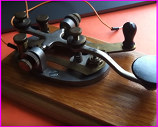 Students in grades 4 to 8 or higher learn the basics of electricity and sound by designing and building a working telegraph system using batteries, wire, and other simple parts. They then use their telegraphs – one of history’s most important inventions – to send and receive messages.
Students in grades 4 to 8 or higher learn the basics of electricity and sound by designing and building a working telegraph system using batteries, wire, and other simple parts. They then use their telegraphs – one of history’s most important inventions – to send and receive messages.
Read More
Filed under: Class Activities, Grades 6-8, Grades 9-12, Lesson Plans | Comments Off on Build a Telegraph Tapper
Tags: Class Activities, electricity, Energy, Golden spike transcontinental railroad, History, Lesson Plan, Morse code, sound, telecommunications, telegraph, train
Posted on March 6th, 2019 by Mary Lord
 Civil, chemical, and environmental engineers work together to develop new water treatment systems or to improve existing ones. In this activity, teams of students in grades 3-5 investigate different methods for removing pollutants from water, then design and build their own water filters from plastic bottles.
Civil, chemical, and environmental engineers work together to develop new water treatment systems or to improve existing ones. In this activity, teams of students in grades 3-5 investigate different methods for removing pollutants from water, then design and build their own water filters from plastic bottles.
Read More
Filed under: Class Activities, Grades K-5, Grades K-5, Grades K-5, Lesson Plans | 2 Comments »
Tags: Class Activities, drinking water, Environmental Engineering, Grades K-5, Lesson Plan, Pollution, teachengineering, water filter
 Middle school students learn the concept of dead reckoning by using vectors to plot a course based on a time and speed, then correct their positions with vectors representing winds and currents. Includes a link to related activities on navigation and creating nautical charts.
Middle school students learn the concept of dead reckoning by using vectors to plot a course based on a time and speed, then correct their positions with vectors representing winds and currents. Includes a link to related activities on navigation and creating nautical charts.








 In this lesson, students in grades 2 – 7 use simple materials to design and make model sailboats that must stay upright and sail straight in a testing tank. They will learn the basic components of a ship and how design represents a tradeoff between speed, stability, and ease of handling.
In this lesson, students in grades 2 – 7 use simple materials to design and make model sailboats that must stay upright and sail straight in a testing tank. They will learn the basic components of a ship and how design represents a tradeoff between speed, stability, and ease of handling. Elementary students learn about wind and kinetic and renewable energy while following the steps of the engineering design process to imagine, create, test, evaluate, and refine small, wind-powered sail cars built from limited quantities of drinking straws, masking tape, paper, and beads. Teams of two then compete to see which sail-car travels the farthest when pushed by the wind (simulated by the use of an electric fan).
Elementary students learn about wind and kinetic and renewable energy while following the steps of the engineering design process to imagine, create, test, evaluate, and refine small, wind-powered sail cars built from limited quantities of drinking straws, masking tape, paper, and beads. Teams of two then compete to see which sail-car travels the farthest when pushed by the wind (simulated by the use of an electric fan). Middle school students take on the role of marine biologists to investigate how sharks move in three-dimensional space (3-D). Understanding the mathematics behind shark movement will inform the design of a prototype joystick for a robotic exploration shark used to collect oceanic data.
Middle school students take on the role of marine biologists to investigate how sharks move in three-dimensional space (3-D). Understanding the mathematics behind shark movement will inform the design of a prototype joystick for a robotic exploration shark used to collect oceanic data. Students in grades 4 to 9 learn about projectile motion by designing, building, and testing a machine that can kick a Ping-Pong ball into a cup lying on its side 12 inches away.
Students in grades 4 to 9 learn about projectile motion by designing, building, and testing a machine that can kick a Ping-Pong ball into a cup lying on its side 12 inches away. Students in grades 6 to 8 apply their knowledge about mountains and rocks to transportation engineering to develop a model mountain tunnel from that simulates the principles behind real-life engineering design. Teams design and create model tunnels through a clay mountain, working within design constraints and testing for success; the tunnels must meet specific design requirements and withstand a certain load.
Students in grades 6 to 8 apply their knowledge about mountains and rocks to transportation engineering to develop a model mountain tunnel from that simulates the principles behind real-life engineering design. Teams design and create model tunnels through a clay mountain, working within design constraints and testing for success; the tunnels must meet specific design requirements and withstand a certain load. The driving of the last spike of the Transcontinental Railroad on May 10, 1863, capped more than a century of engineering triumph and human tragedy. Teach your students about the historical impact of engineering and technology on society with these activities and resources designed to mark the anniversary of that fateful meeting of two steam locomotives at Promontory, Utah, 150 years ago.
The driving of the last spike of the Transcontinental Railroad on May 10, 1863, capped more than a century of engineering triumph and human tragedy. Teach your students about the historical impact of engineering and technology on society with these activities and resources designed to mark the anniversary of that fateful meeting of two steam locomotives at Promontory, Utah, 150 years ago. Students in grades 4 to 8 or higher learn the basics of electricity and sound by designing and building a working telegraph system using batteries, wire, and other simple parts. They then use their telegraphs – one of history’s most important inventions – to send and receive messages.
Students in grades 4 to 8 or higher learn the basics of electricity and sound by designing and building a working telegraph system using batteries, wire, and other simple parts. They then use their telegraphs – one of history’s most important inventions – to send and receive messages. Civil, chemical, and environmental engineers work together to develop new water treatment systems or to improve existing ones. In this activity, teams of students in grades 3-5 investigate different methods for removing pollutants from water, then design and build their own water filters from plastic bottles.
Civil, chemical, and environmental engineers work together to develop new water treatment systems or to improve existing ones. In this activity, teams of students in grades 3-5 investigate different methods for removing pollutants from water, then design and build their own water filters from plastic bottles.